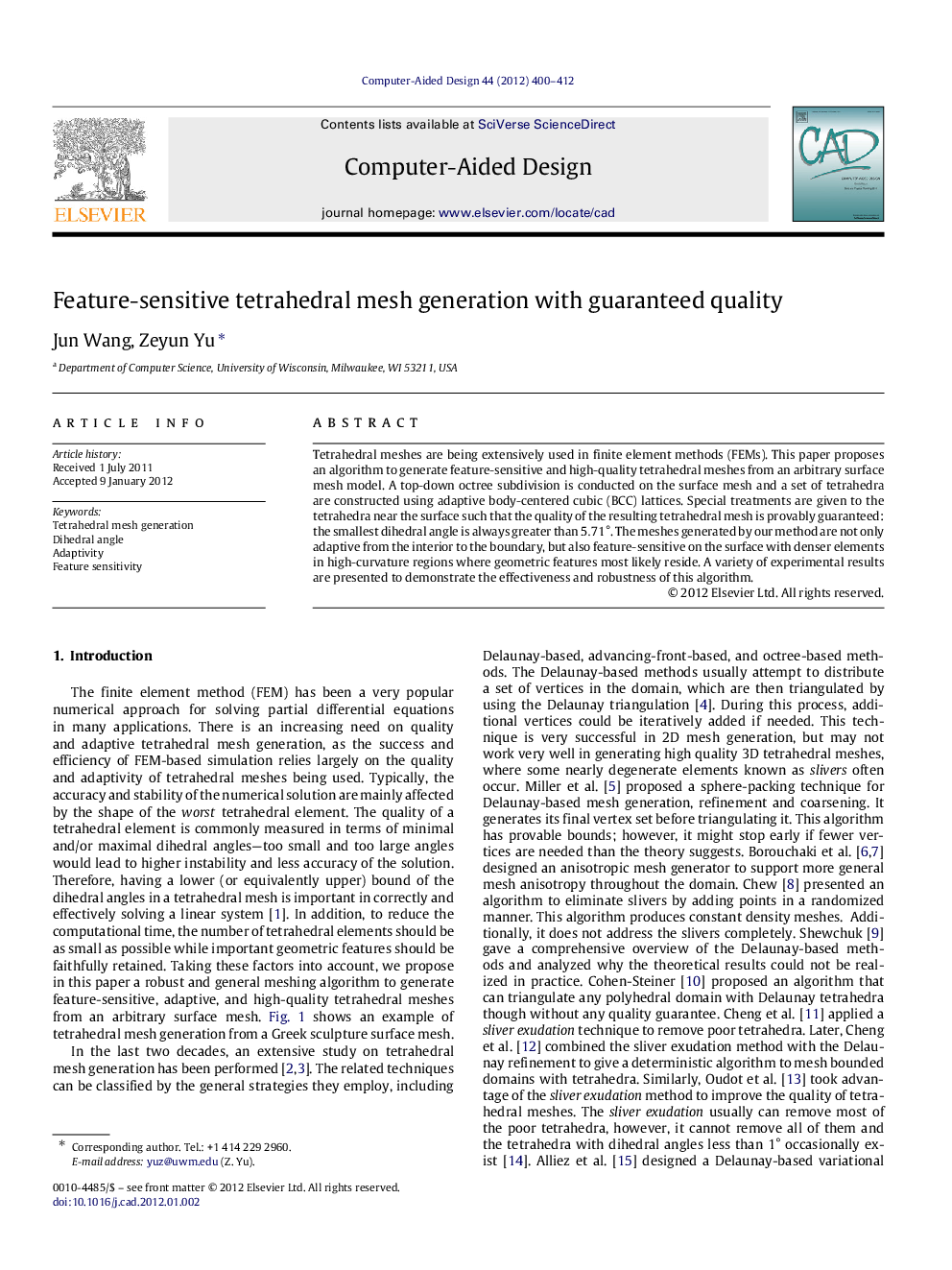| Article ID | Journal | Published Year | Pages | File Type |
|---|---|---|---|---|
| 440125 | Computer-Aided Design | 2012 | 13 Pages |
Tetrahedral meshes are being extensively used in finite element methods (FEMs). This paper proposes an algorithm to generate feature-sensitive and high-quality tetrahedral meshes from an arbitrary surface mesh model. A top-down octree subdivision is conducted on the surface mesh and a set of tetrahedra are constructed using adaptive body-centered cubic (BCC) lattices. Special treatments are given to the tetrahedra near the surface such that the quality of the resulting tetrahedral mesh is provably guaranteed: the smallest dihedral angle is always greater than 5.71°. The meshes generated by our method are not only adaptive from the interior to the boundary, but also feature-sensitive on the surface with denser elements in high-curvature regions where geometric features most likely reside. A variety of experimental results are presented to demonstrate the effectiveness and robustness of this algorithm.
► Tetrahedral meshes produced have dihedral angles greater than 5.7°. ► Tetrahedral meshes produced are adaptive both inside and on the boundary. ► Algorithms proposed are very robust, accompanied with a user-friendly GUI.
